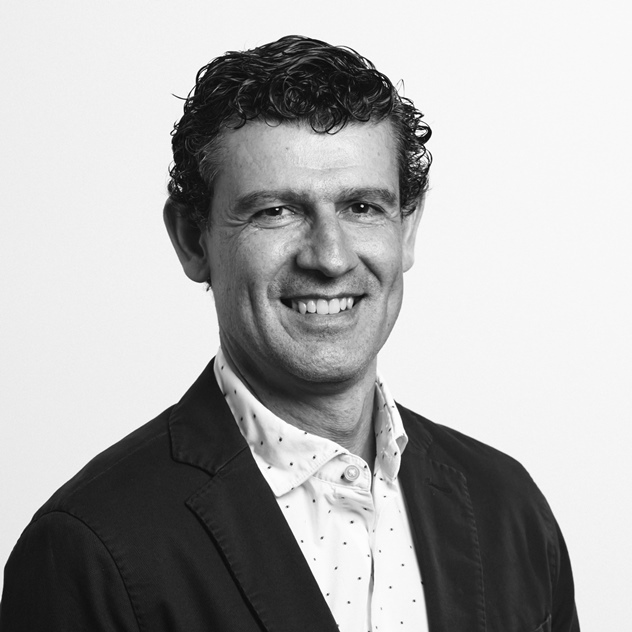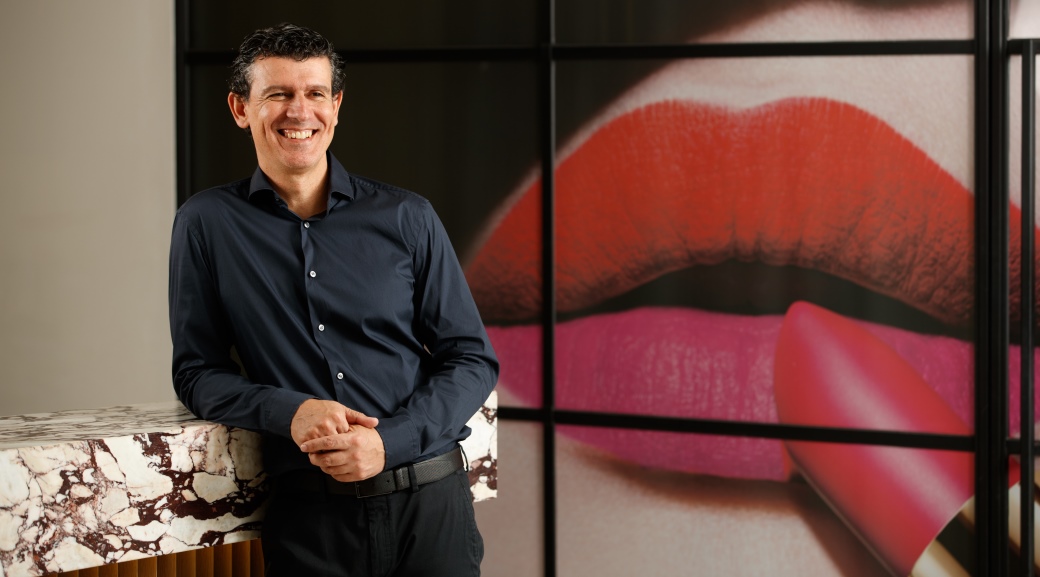L’Oréal is the biggest beauty company in Australia and globally. For decades, the French multinational has been a leading pioneer of corporate citizenship, innovation and expansion through acquisitions in the worldwide cosmetics industry. So how does the titan of the beauty business fasttrack its practices and mindset during a monumental year of change? esprit talks to Rodrigo Pizarro, managing director of L’Oréal Australia and New Zealand, about new programs, technologies and strategies that have kept the company nimble and resilient during the COVID-19 pandemic.
E-commerce has sky-rocketed during thecoronavirus crisis. In the first half of 2020, L’Oréal’s global e-commerce sales rose 64.6 per cent, accounting for 25 per cent of the group’s revenues. By contrast, e-commerce sales for the full year 2019 represented 15.6 per cent of the multinational’s overall business. In Australia, L’Oréal’s online sales rose 140 per cent in the June half – up from 6.5 per cent in 2019 – offsetting the drop in sales due to store closures during lockdowns nationwide.
DIGITAL TRANSFORMATION IN PLACE/ DYNAMIC SALES
The digital transformation is the most important change to our business, says Pizarro. “We started the process two years ago. E-commerce sales were taking off and we established single brand e-commerce sites for five of our luxury brands and strengthened our relationships with omnichannel retailers such as Myer, David Jones and Sephora and pure player, Adore Beauty. We also have an agreement with Amazon and opened a multi-brand shopfront on eBay.”
L’Oréal Australia also invested heavily in a highly automated Knapp picking and packing facility at its Melbourne distribution centre. “We were prepared for the COVID-19 crisis because our model is as much about tomorrow as it is for today,” says Pizarro. “We did it ourselves and can now access more first party data. Some partners do not share data and we are now ahead of the curve with our CRM (customer relationship management). We leverage our own sites and also have more brands on more sites.”
Overall sales have remained surprisingly strong during the pandemic because of the rise in online sales and changes to our service strategies, says Pizarro. “It’s been a tough moment for everyone, but in a humble way we have been lucky. With the exception of Victoria, sales have been very dynamic in all the other states. Some segments such as makeup have been negative, but skincare and haircare sales have helped us get through the crisis relatively unscathed.”
SKINCARE BOOM/ E-BEAUTY ADVISORS KEY
Skincare sales now account for 60 per cent of L’Oréal sales in Asia/Pacific and the company’s Active Cosmetics division, including the CeraVe, SkinCeuticals and La Roche-Posay brands, which posted doubledigit growth across the region in the first half.
The boom in skincare sales has been incredible, says Pizarro. “Our offerings are very broad and complementary from Lancôme to L’Oréal Paris. Our main dermo-cosmetics brand – La Roche-Posay – has seen huge growth because it deals with many concerns which have worsened during the COVID-19 pandemic such as irritation and breakouts.
“To be a leader, you have to listen to consumers and the success of La RochePosay demonstrates the importance of providing what consumers want and need. Sales of hair products, hair colourants and masks have also increased, but we are also looking at what comes next and customisation and auto-replenishment are top-of-mind.”
Digitally-enhanced experiences, centralised platforms and digital content were already high on the agenda for the beauty industry. But the COVID-19 crisis drastically altered customer-facing and company-facing trends. Sophisticated digital appointment platforms are allowing customers to shop and receive advise and focused attention from beauty advisors. The shift has produced more connected personal experiences both in-store and online.
“The stronger emphasis in e-beauty advisors isn’t just transactional,” says Pizarro. “The pandemic also allowed our amazing team of BAs to upskill through LinkedIn, social media and livestreaming. Consumers can talk to BAs in real time and we are seeing a more personal connection with brands. The important thing is to achieve a balance between in-store and online and the new strategies remain all about trust, so we have the best of both worlds. We had already been encouraging all employees, including myself, to use Instagram and other social media to reach out to consumers.”
WORKING TOWARDS A SUSTAINABLE FUTURE
L’Oréal released its global sustainability program for 2030 in July. Titled L’Oréal for the Future, key areas of focus include climate change, fresh water usage, ozone depletion and ocean acidification. Core targets include carbon neutrality by 2025, 100 per cent re-used or recycled water by 2030 and 95 per cent of ingredients in formulas to be bio-based by 2030.
Other goals cover 100 per cent of the plastics in packaging to be from recycled or bio-based sources by 2030, 100 per cent of employees from strategic suppliers to be paid at least a living wage and helping 100,000 people from disadvantaged communities to gain access to employment over the coming decade. To date, L’Oréal is the only company in the world to achieve an “A” in all three CDP rankings – climate protection, water management and forest preservation – for four years in a row.
To be carbon neutral is a global policy for L’Oréal and the company has made great strides in Australia, says Pizarro. “We seriously started to pursue green and sustainability issues in 2009. Not just from the inside but upstream and downstream in our operations. Social sustainability is an important as environmental sustainability and L’Oréal has been at the forefront of both throughout our operations. Sustainability is also the driving force for all of our new product launches from formulas to packaging.”
AN INCLUSIVE AND COLLABORATIVE WORKPLACE
As a subsidiary of an international company, L’Oréal Australia was not eligible for the JobKeeper program. The headquarters are in Melbourne and the business has experienced the strictest of lockdowns, says Pizarro. “Returning to the office has been very slow for our employees and the warehouse staff are working in three shifts. Safety and social distancing have been paramount, but in my opinion good leadership involves leading from the heart as well as the head. We have offered our employees total support 24/7, directly and indirectly. People don’t like uncertainty, so we have included a strong program of connection from emotional and mental help to exercise such as pilates and yoga. My passion is to shape a work environment that is inclusive, diverse and collaborative, which leads to the best results.”

FAST FACTS – RODRIGO PIZARRO
• Rodrigo Pizarro is a graduate of ISEG, the Lisbon School of Economics and Management.
• He started his career with L’Oréal in 1993 as a product manager for hair colour in Portugal.
• He has held senior executive positions in France and Brazil.
• With extensive international experience in marketing, sales and general management, Pizarro was appointed country manager of L’Oréal Australia and New Zealand in August 2014.
• Over the past six years, he has accelerated the company’s digital transformation and an integrated CRM program, embedding the use of tracking tools to monitor and measure social media activity to advance the local L’Oréal e-commerce business.
• L’Oréal Luxe is a portfolio of leading prestige brands, including Lancôme, Ralph Lauren, YSL Beauty, Giorgio Armani, Viktor & Rolf, Urban Decay and Kiehl’s. The core brands of the Consumer Products Division include L’Oréal Paris, Maybelline New York, Garnier and NYX. The main brands of the Active Cosmetics division are La Roche-Posay, CeraVe and SkinCeuticals.
• L’Oréal Professional Products division comprises professional haircare brands sold mainly in hairdressers – Kerastase, Pureology, Redken, Matrix and L’Oréal Professionnel.
This article was first published in the Summer 2020 issue of esprit.

